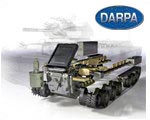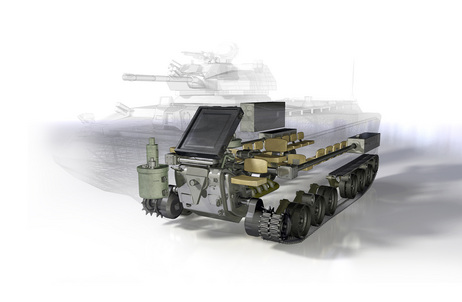Crowdsourcing to Create a Disruptive Approach to Building Military Vehicles
Published Aug-06-13Breakthrough:
A series of DARPA crowdsourcing challenges that aim to radically overhaul the approach to the design of military vehicles. The winners of the first challenge pick up $1 million for their innovative design.
Company:
DARPA, United States
The Story:
 In 2010 the US Department of Defense and the Defense Advanced Research Projects Agency (DARPA) launched a major program to crowdsource the next generation of infantry fighting vehicle (IFV) through a series of design challenges.
In 2010 the US Department of Defense and the Defense Advanced Research Projects Agency (DARPA) launched a major program to crowdsource the next generation of infantry fighting vehicle (IFV) through a series of design challenges.The move was prompted by the need for a broader range of ideas and for research and production to come in at lower costs. Speed is also a factor according to DARPA: “Current approaches to the development of defense systems and vehicles have proven inadequate for the timely delivery of much needed capability for the warfighter.”
According to DARPA’s Tactical Technology Office, the Department of Defense’s’ ability to handle the design and development of complex systems is still stuck in 1960’s era approaches.
Tapping into Fresh Thinking
DARPA is hoping that a collaborative, open innovation approach will attract new audiences outside the traditional defense industry.
Going by the acronym AVM (adaptive vehicle make) the specific aims of this program are to compress development timescales at least five fold and increase the innovation pool by several factors of 10.
One of the crowdsource initiatives under the umbrella AVM initiative is the Fast Adaptable Next-Generation Ground Vehicle (FANG) program, a series of three independent challenges with a total of $4 million in prizes up for grabs.
The challenges increase in the complexity of the vehicle subsystems, leading up to the design of a full, heavy-duty machine that conforms to the requirements of the Marine Corps’ Amphibious Combat Vehicle (ACV).
The program was launched in early 2013 and invited engineering hobbyists, students, and small businesses to come together in small teams and create breakthrough designs.
Just as important as the designs is the ability to put a new genre of development tools through their paces. Among other things this will be to see if they can be used to significantly shorten timetables associated with the development of military vehicles.
First FANG Challenge
In April 2013, the winner of the first FANG challenge was announced. In this contest participants had to develop a subsystem focused on mobility and drivetrain for the infantry fighting vehicle.
More than 200 teams comprising over 1,000 people took part and the eventual winner was a three-person outfit with members based in California, Ohio, and Texas. Their design received the highest score when measured against such requirements as performance, lead time, and unit cost. For their endeavors the team was awarded $1 million.
“The first FANG Challenge has been a great experiment, and the submission of many viable, innovative designs has validated the Adaptive Vehicle Make (AVM) design tools and provided invaluable feedback to continue their development,” said Army Lt. Col. Nathan Wiedenman, DARPA program manager.
Next Steps
This first challenge helped to validate some of the design tools being used for the development of the AVM.
The other FANG challenges in the series are the FANG Chassis/Stuctural Challenge and the FANG Full Vehicle Challenge. The contest will run until early 2015.
Next Story »


